Media | Articles
1970 was one tough year for these muscle cars (and that’s a good thing)
American Motors’ advertising agency of record—Wells, Rich, Greene, Inc.—produced an interesting ad to introduce the face-lifted 1970 AMX. “We made the AMX look tougher this year because it’s tougher this year,” read the headline. The former was the absolute truth thanks to a hood scoop and parking lights moved to the grille, and the latter was no less true due to an astounding upgrade of 65 horsepower.
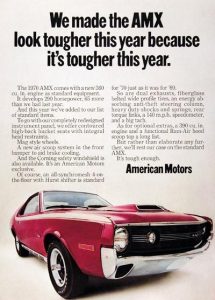
The AMX wasn’t the only 1970 model that featured a tougher look with additional suds to get the job done; there were several other ’70 performance models with similar updates. Fifty years later, here’s a golden retrospective on these pugnacious performers:
Chevrolet Chevelle SS 396/454
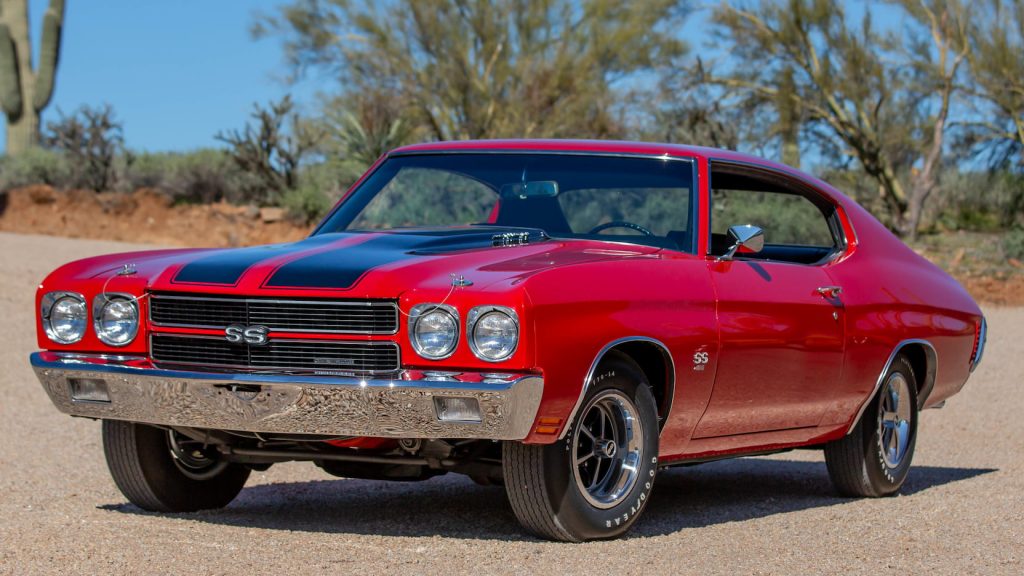
General Motors’ A-body platform was ripe for a restyle in 1970 among all the brands, and the Buick GS was by far the biggest improvement. However, the Chevelle SS 396 and SS 454 may have come off looking the toughest. While the 1968–69s are popular, the Chevelle SS hit the gym for 1970 and emerged with a cut physique thanks to a stockier stance, bulges over the wheel arches, and new domed hood that could be optioned with Cowl Induction for the first time. New Z/28-style stripes were available (optional for the standard hood and included with Cowl Induction) but those without stripes arguably look more buff. The standard engine received a 25-horsepower upgrade and the industry’s high-horsepower champion—the LS6 454 with 450 horsepower—became a one-year option, showing that there was muscle to back up its looks.
Dodge Coronet R/T
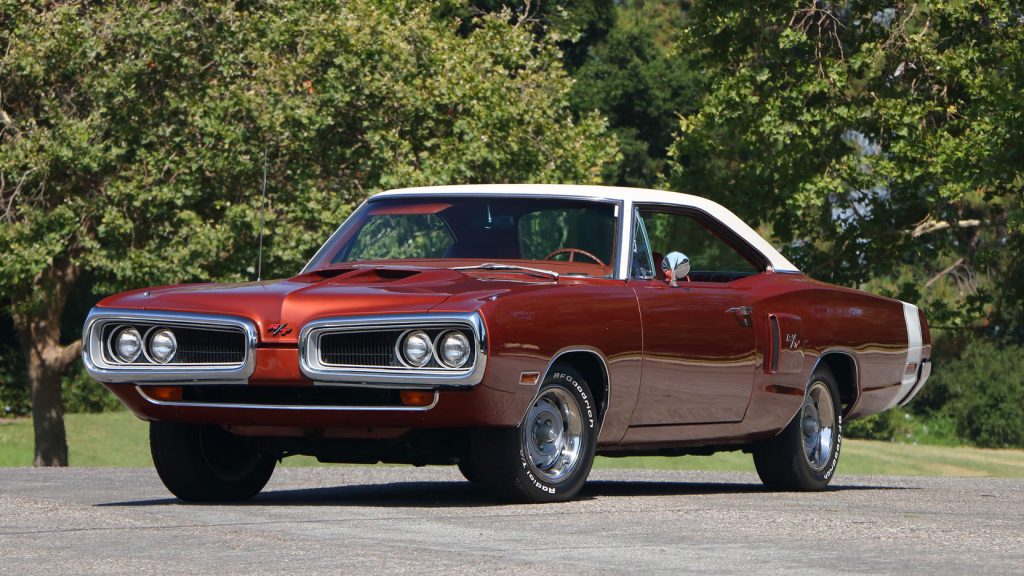
Like the Chevelle, the 1970 Coronet was a restyle of the 1968–69 series. Unlike the Chevelle, the Coronet is a love/hate affair, with enthusiasts split on whether it looks ugly or angry and determined. Stylist Diran Yazejian told Collectible Automobile magazine that the idea behind the front-end theme was inspired by the signature delta taillights but, as with any creative endeavor, it seemed the vision and the final result didn’t quite match. Either way, the Coronet looked tougher, especially in Coronet R/T guise with its new standard scooped hood and standard “M46” side scoops. It also was tougher thanks to the introduction of the 440 Six Pack engine. This engine had been a Super Bee exclusive in 1969, but for 1970 it joined the 440 Magnum and 426 Hemi for the Coronet R/T. While the Hemi was and always has been King, some swore the 440 Six Pack was the way to go on the street, perfectly matched for the aggressive new styling.
Ford Mustang Mach I
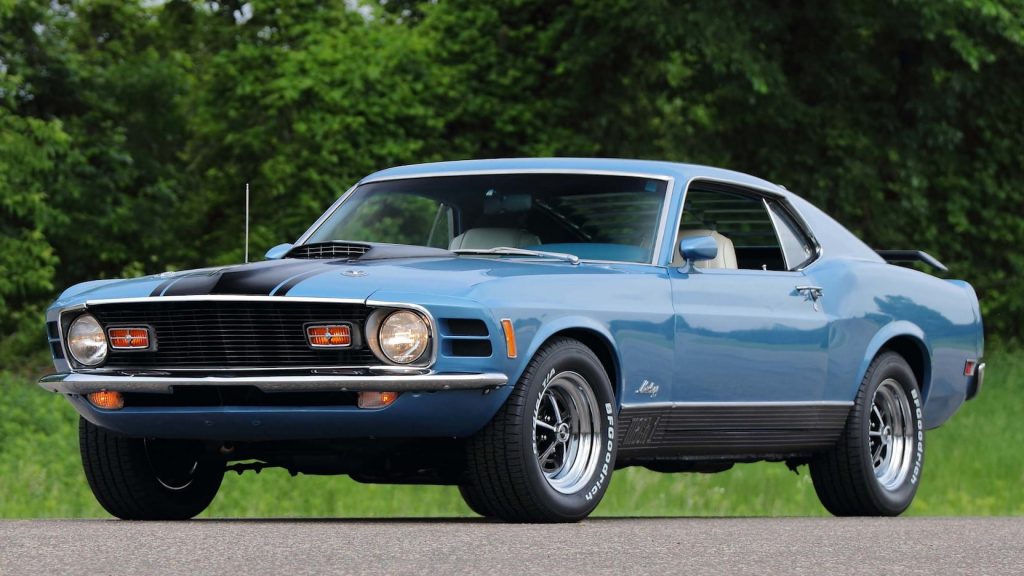
As Ford’s new image car (along with the Fairlane Cobra), the 1969 Mach I SportsRoof was practically the second verse to the song first sung when the 428 Cobra Jet was introduced the previous April. Standard was the new 351 “Windsor” with two-barrel carburetor, but things began to get interesting with the 290-horsepower four-barrel version. Take a poll and it’s likely that this—especially with the 428 Cobra Jet—is everyone’s favorite Mustang. But, for 1970, Ford tweaked the Mach I Mustang while maintaining everything that was good about it. The keys to its newfound toughness were filled-in rear fender scoops (giving the SportsRoof broader shoulders), a dark argent extruded aluminum rocker panel molding, “sport lamps” in the grille, honeycomb back panel appliqué, and stripes front and rear in black or white. Available under the hood was a new, more powerful 351 “Cleveland” design that, in four-barrel form, featured more standard horsepower and impressive potential. Those seeking more could still opt for the 428 Cobra Jet, especially with the Drag Pack and Detroit Locker rear.
Marketplace
Buy and sell classics with confidence
Oldsmobile 4-4-2
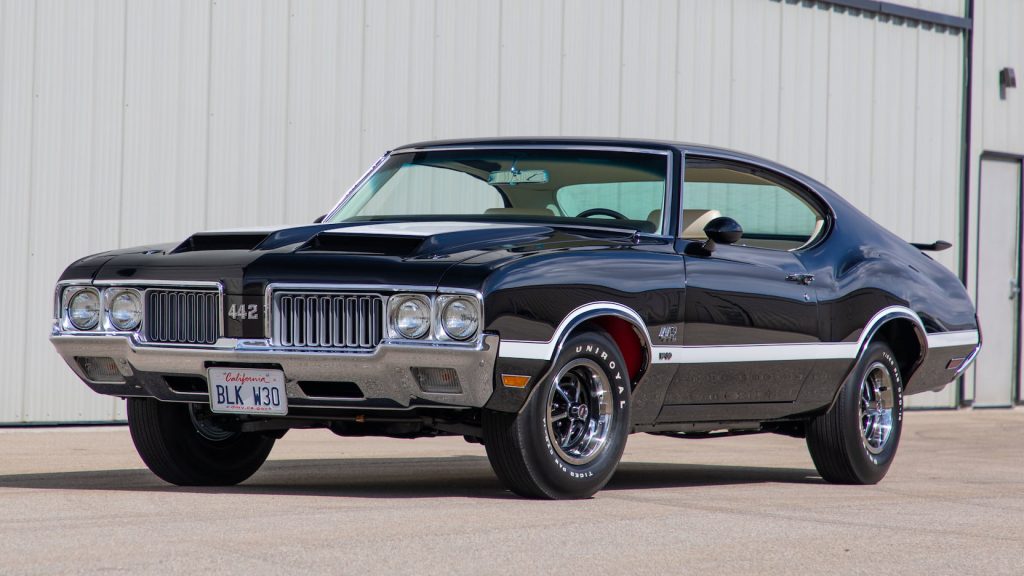
Like the Chevelle, the F-85/Cutlass series was restyled for 1970, although it bore a passing resemblance to the 1969 from the front. The rest of the car went under the knife and, after a nip here, a tuck there, and a lift, the Olds A-body—especially in coupe form—was a looker. The 4-4-2 in particular exploited the prominent rear wheel arches, forward-thrusting front fenders, and available W25 fiberglass hood to good effect. All that style was backed up by a 455 that had previously been only available in the 1968–69 Hurst/Olds (the 4-4-2 featured a 400 in those years). Three-hundred sixty-five horsepower was on tap, with 370 available when the W30 performance package was ordered. Equip yours with the optional spoiler and this was one car that had all the candy that often made cars look overwrought, but in the case of the 4-4-2, it was aggressive yet tasteful.














